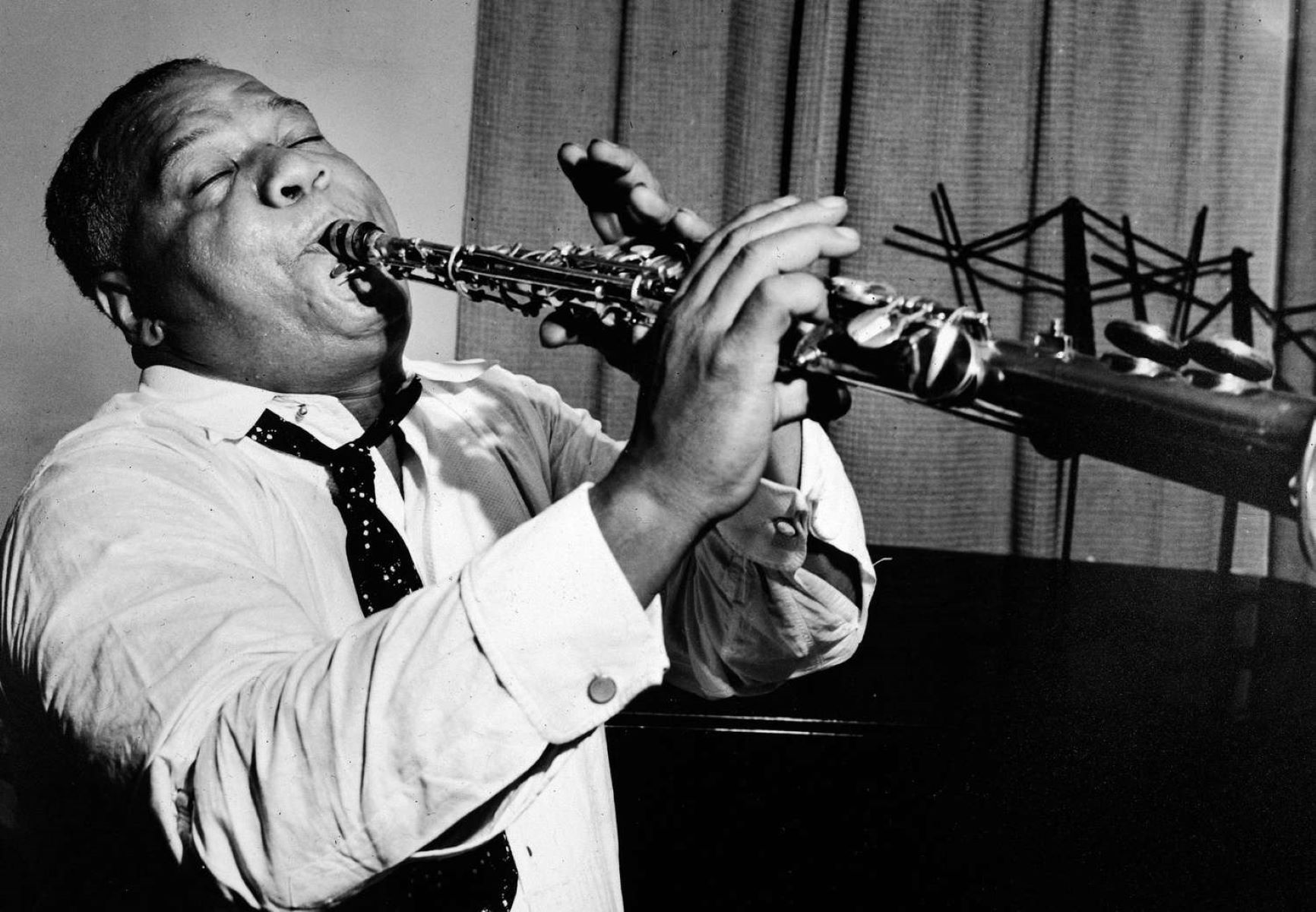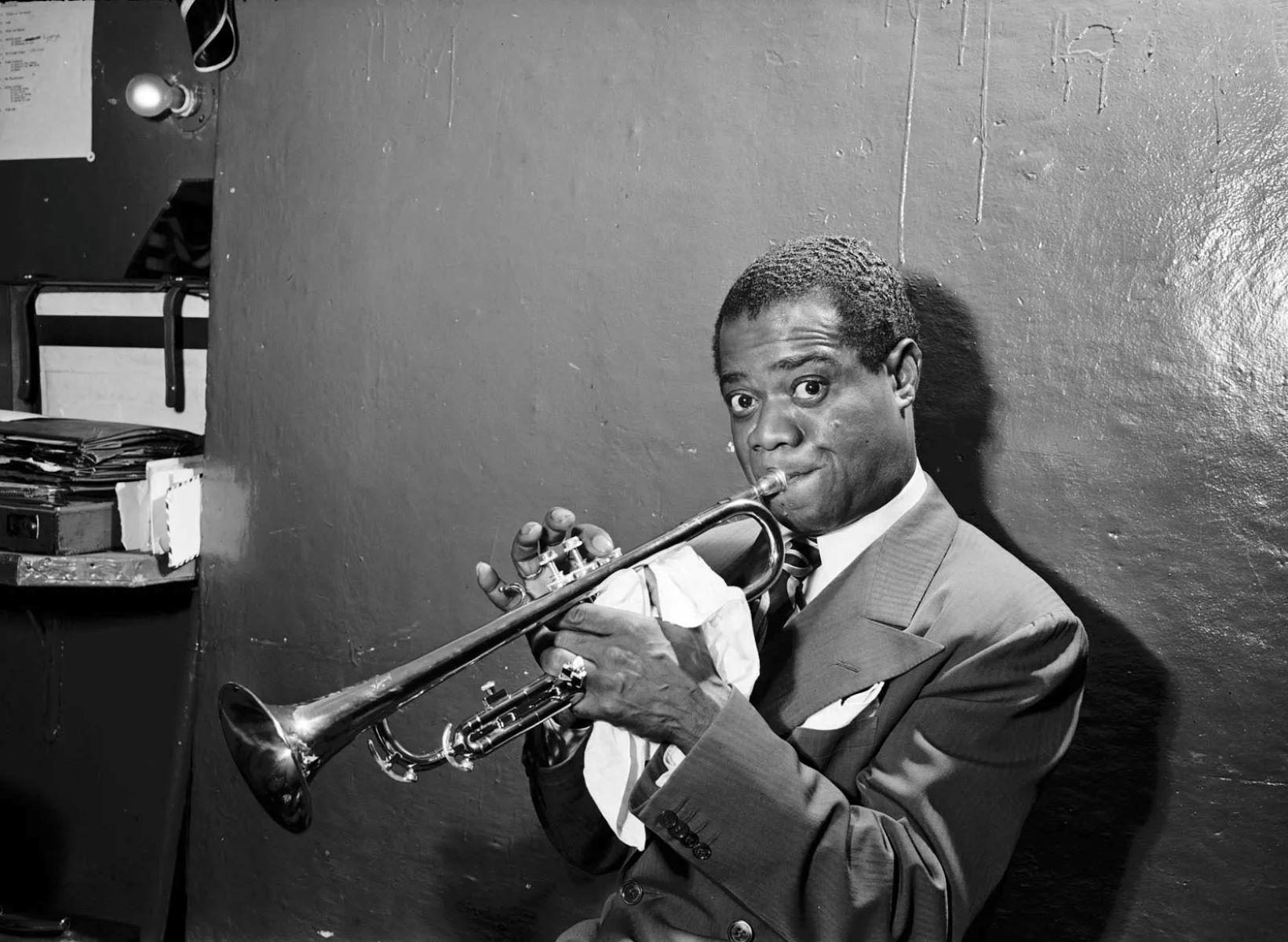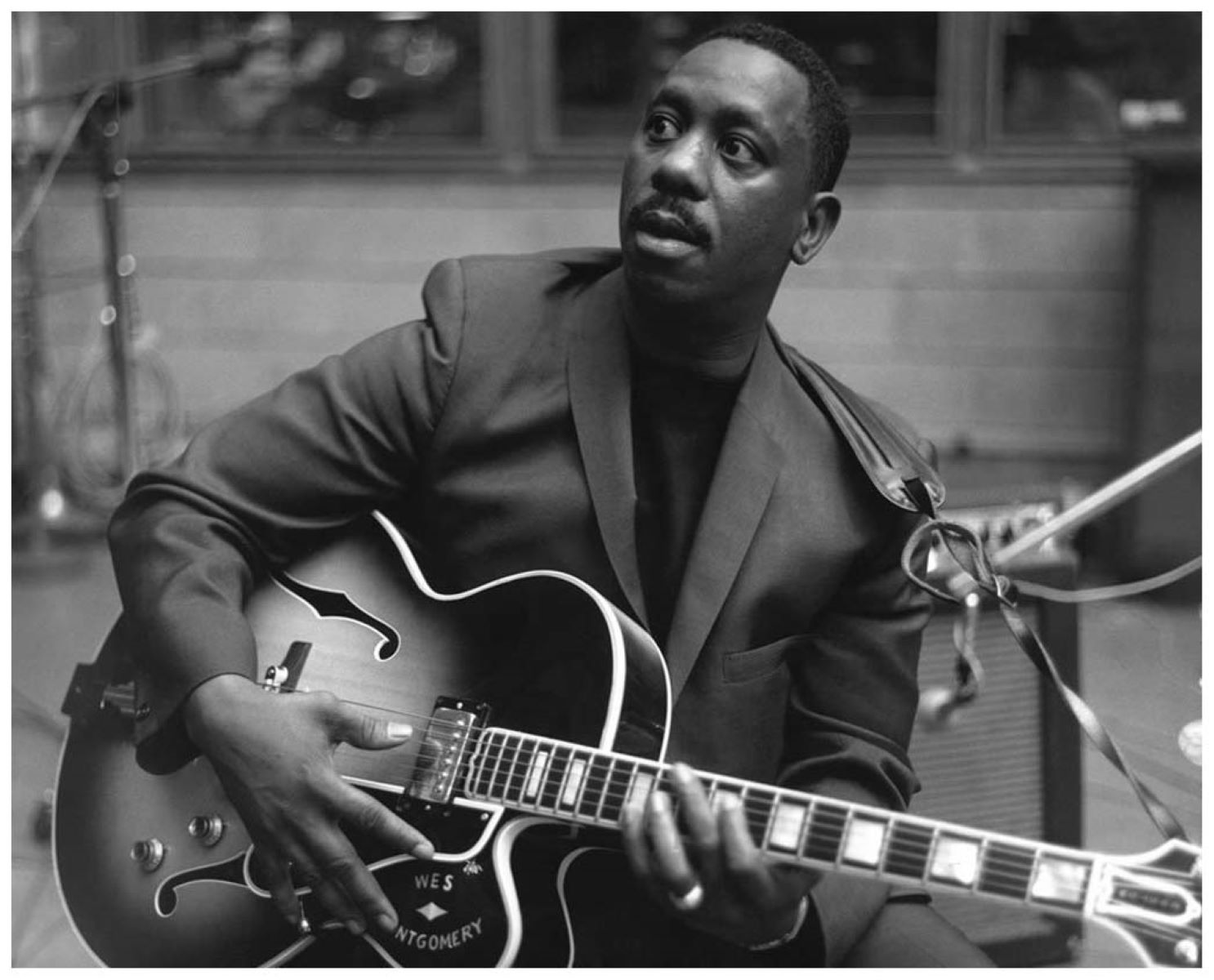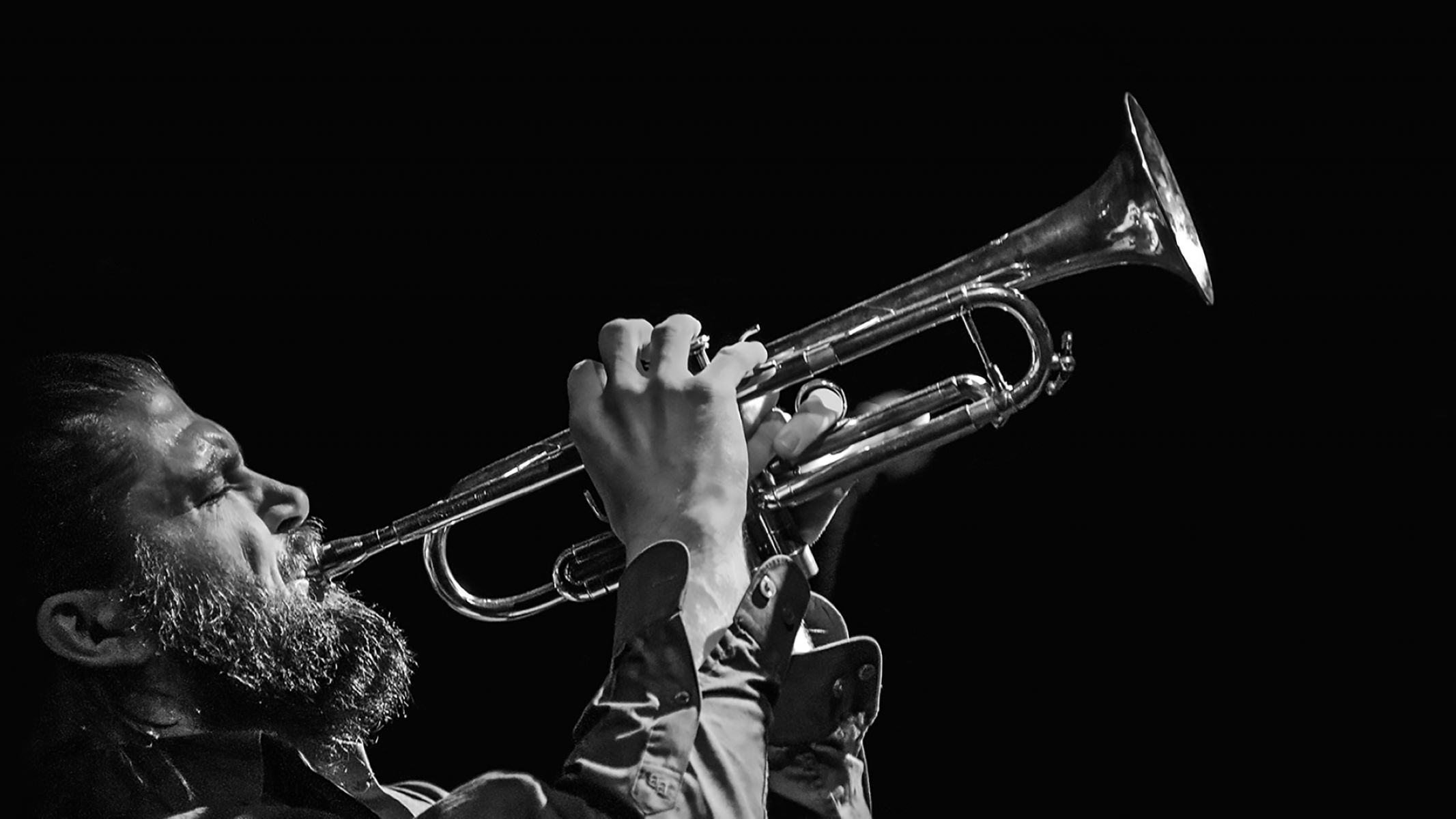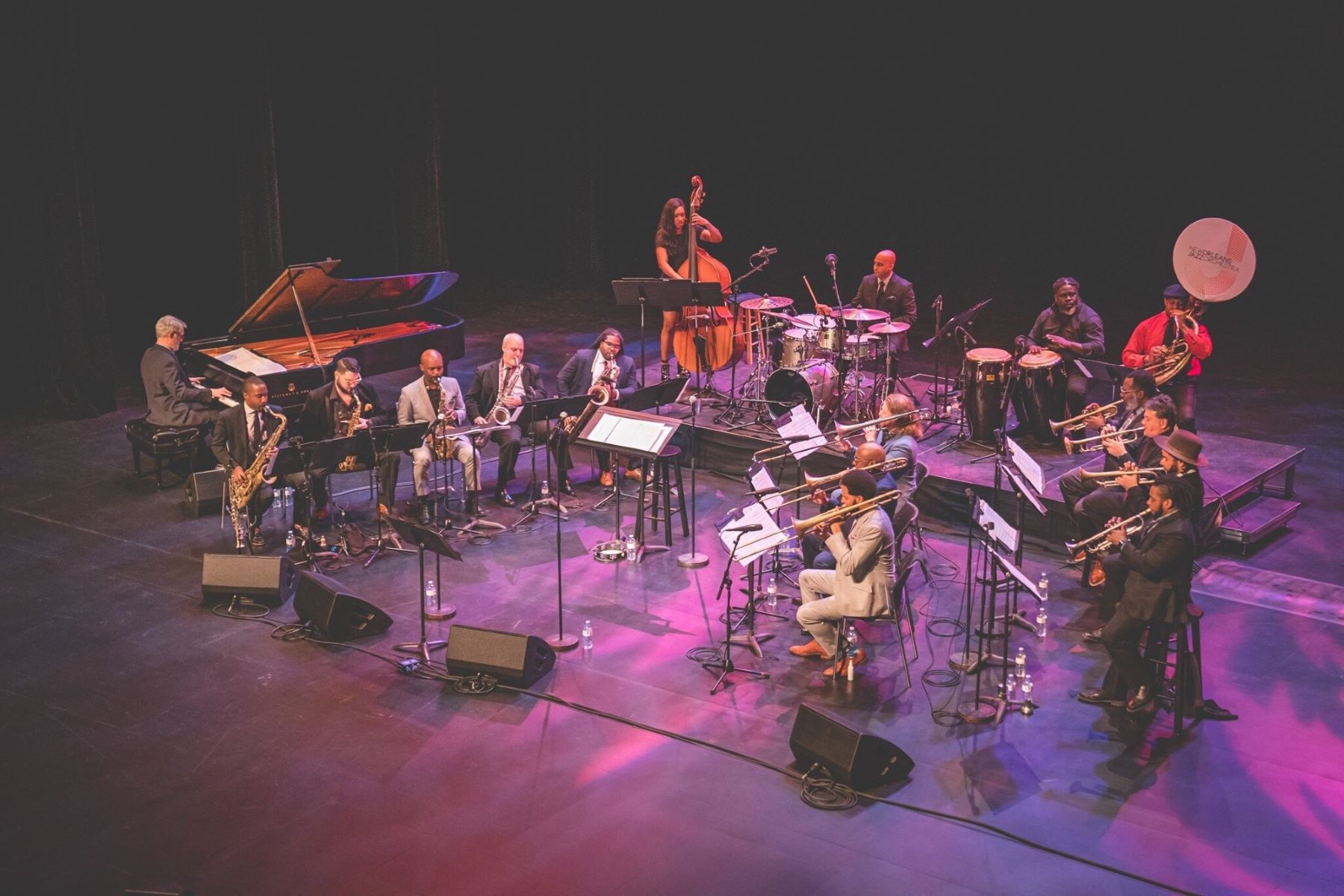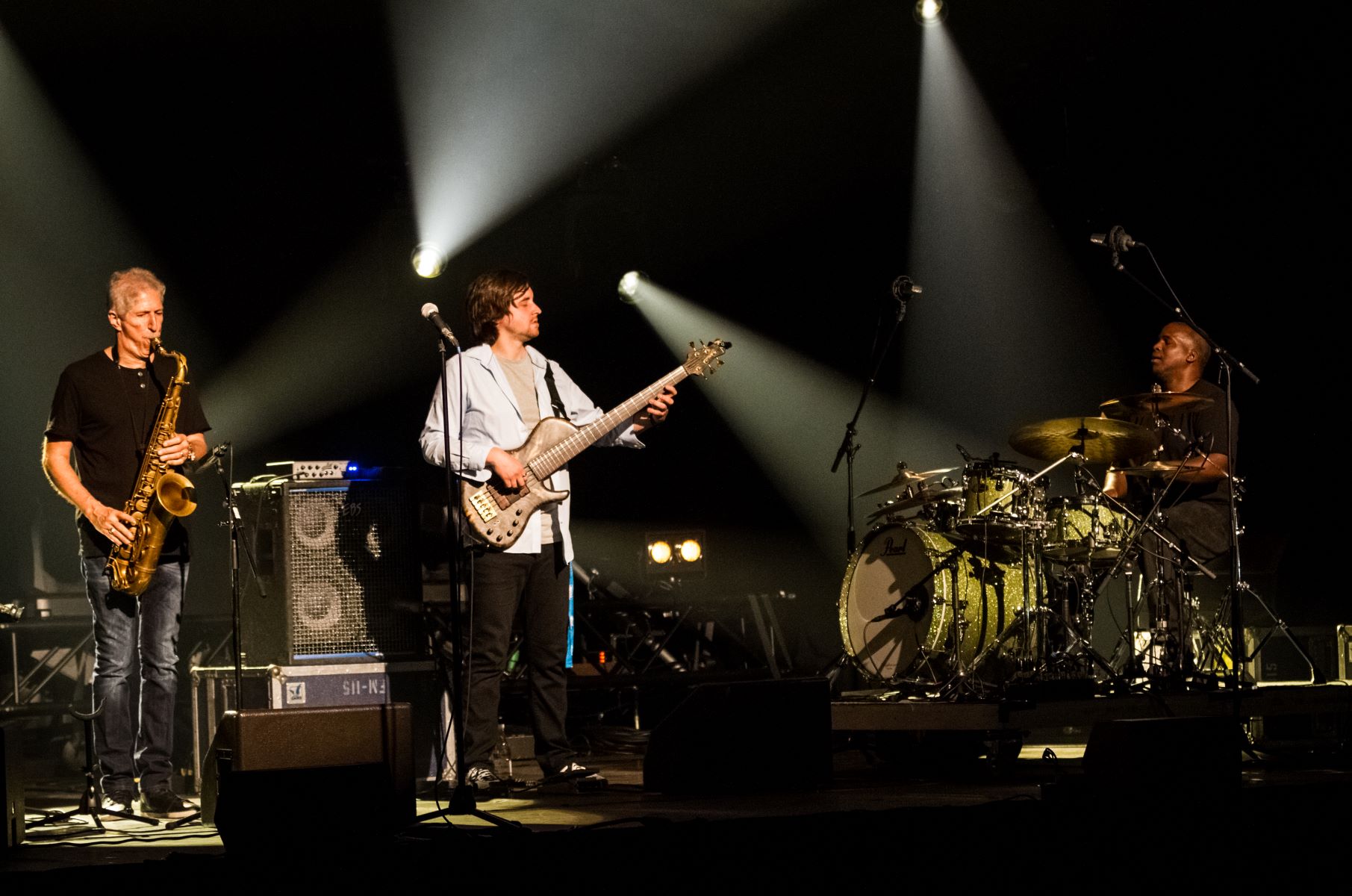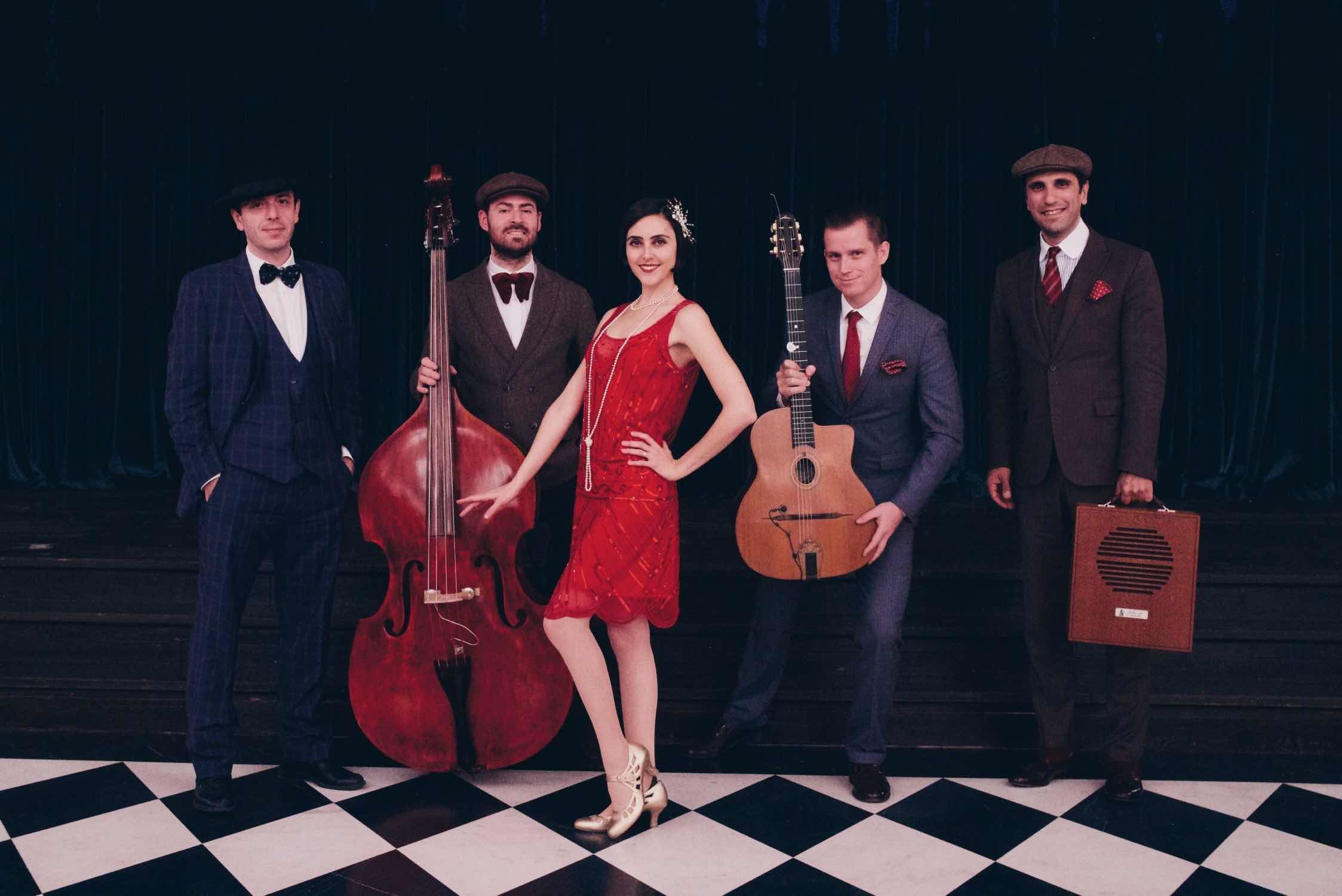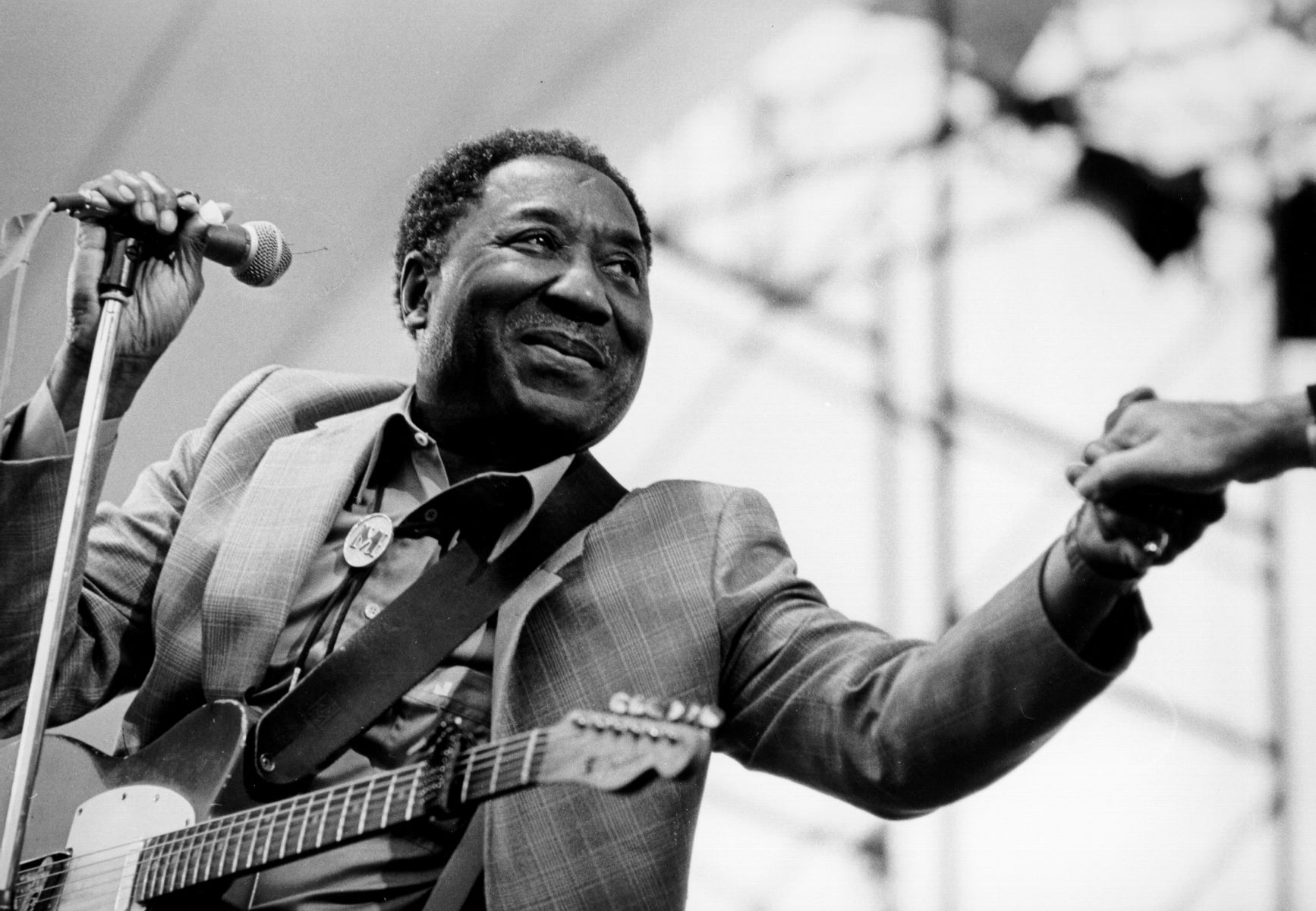Home>Genres>Jazz>When Did The Swing Jazz Style Flourish In America?
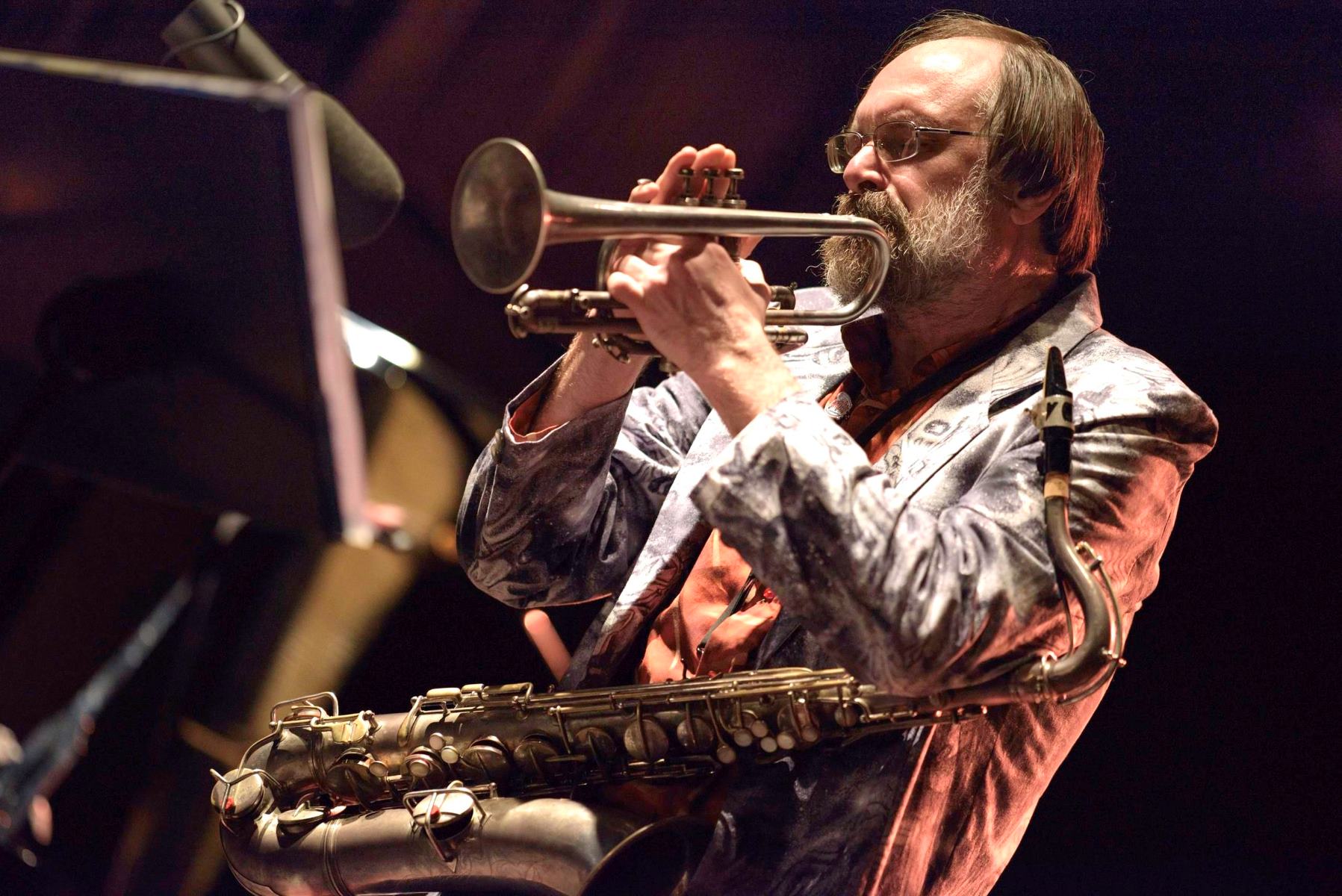

Jazz
When Did The Swing Jazz Style Flourish In America?
Modified: February 18, 2024
Discover the thriving era of Swing Jazz in America, its origins, and its influential artists. Immerse yourself in the captivating rhythm and soul of this beloved genre.
(Many of the links in this article redirect to a specific reviewed product. Your purchase of these products through affiliate links helps to generate commission for AudioLover.com, at no extra cost. Learn more)
Table of Contents
Introduction
Swing jazz, with its infectious rhythm, lively improvisation, and catchy melodies, holds a prominent place in the rich tapestry of American music history. It is a genre that emerged in the early 20th century, blending elements of African American musical traditions and European harmonies. Immensely popular during the 1930s and 1940s, swing jazz became the soundtrack of an era, reflecting the cultural dynamism and excitement of a rapidly changing America.
The birth of swing jazz can be traced back to the early jazz period, when African American musicians in New Orleans incorporated ragtime, blues, and brass band music into their performances. As jazz spread throughout the country, it gained an ever-growing audience and began to evolve into different styles. It was during the era of the Great Migration and the Harlem Renaissance, in the 1920s, when swing jazz truly started to flourish.
The term “swing” refers to a rhythmic and syncopated style of jazz that emphasizes the offbeat, creating a swinging, danceable groove. This characteristic rhythm, combined with melodic improvisation and the use of ensembles featuring brass and woodwind instruments, set swing jazz apart from other genres of its time. The swing era, from the mid-1930s to the late 1940s, marked a golden age for this style of music.
In this article, we will delve into the fascinating history of swing jazz in America. We will explore its origins, the key players and bands that popularized the genre, its impact on American culture, and its lasting legacy. Join us as we embark on a journey through the vibrant and captivating world of swing jazz, a timeless musical genre that continues to captivate audiences to this day.
The Origins of Swing Jazz
Swing jazz traces its roots back to the early 20th century, when African American musicians in New Orleans began incorporating various musical influences into their performances. Drawing from ragtime, blues, brass band music, and even elements of European classical music, these musicians laid the foundation for what would become the swinging sound of jazz.
One of the key figures in the development of swing jazz was Louis Armstrong. Born and raised in New Orleans, Armstrong’s virtuosic trumpet playing and unique vocal style helped popularize the genre. His recordings with his Hot Five and Hot Seven bands in the 1920s showcased the rhythmic energy and improvisational spirit that would become hallmarks of swing jazz.
Another important figure in the origins of swing jazz was Duke Ellington. Ellington, a composer, bandleader, and pianist, had a profound impact on the development of the genre. His band, the Duke Ellington Orchestra, was renowned for its innovative arrangements, sophisticated harmonies, and dynamic performances. Ellington’s compositions, such as “Take the ‘A’ Train” and “It Don’t Mean a Thing (If It Ain’t Got That Swing),” became swing jazz classics.
The migration of African Americans from the South to the urban centers of the North, known as the Great Migration, played a crucial role in the spread and evolution of swing jazz. As these musicians and their audiences moved to cities like Chicago, New York, and Kansas City, they brought with them their musical traditions, infusing the local scenes with the vibrant sounds of jazz.
One of the epicenters of the swing jazz movement was Harlem, a neighborhood in New York City. During the 1920s, Harlem experienced a cultural explosion known as the Harlem Renaissance. This period saw a flourishing of African American arts and culture, with jazz playing a central role. Legendary venues like the Cotton Club and the Savoy Ballroom showcased the talents of both established and up-and-coming musicians, providing a platform for swing jazz to gain wider recognition.
As swing jazz continued to evolve and gain popularity, it began to attract the attention of white audiences as well. This cross-cultural exchange helped propel swing jazz into the mainstream and contributed to its lasting impact on American music.
The Great Migration and the Harlem Renaissance
The Great Migration, a mass movement of African Americans from the rural South to urban centers in the North and Midwest, had a profound impact on the cultural landscape of America. This migration, which took place between 1910 and 1970, brought millions of African Americans to cities like Chicago, New York, and Detroit, seeking better economic opportunities and escaping the discriminatory Jim Crow laws of the South.
As African Americans settled in these urban centers, they brought with them their vibrant cultural traditions, including their music. This influx of talented musicians played a crucial role in the development of swing jazz. They found opportunities to perform and collaborate, forming bands and orchestras that would become instrumental in shaping the genre.
One of the key destinations for African American migrants was Harlem, a neighborhood in New York City that became a hub of African American culture and creativity. The Harlem Renaissance, a cultural and intellectual movement that spanned the 1920s, was a defining moment for African American literature, art, music, and theater. Jazz, particularly swing jazz, played a central role in this cultural renaissance.
Harlem became a magnet for aspiring musicians, poets, writers, and artists. Clubs, speakeasies, and theaters in Harlem provided venues for these talented individuals to showcase their skills. The Cotton Club, in particular, became a hotspot for swing jazz, featuring performances by Duke Ellington and his orchestra. This legendary venue attracted both black and white audiences, contributing to the popularization and mainstream acceptance of swing jazz.
The Harlem Renaissance not only provided a platform for African American musicians but also fostered a spirit of artistic collaboration and innovation. Musicians from various backgrounds and regions came together, experimenting with new musical ideas and pushing the boundaries of jazz. The result was a vibrant and dynamic sound that would define the swing era.
Important figures of the Harlem Renaissance included not only Duke Ellington but also Coleman Hawkins, Count Basie, and Billie Holiday, among others. These artists contributed to the growth and evolution of swing jazz, creating a dynamic and diverse musical landscape.
The Great Migration and the Harlem Renaissance played an integral role in the development of swing jazz. They created an environment where talented musicians could thrive, collaborate, and push the boundaries of the genre. The cultural exchange and artistic innovation that took place during this time laid the foundation for the continued growth and popularity of swing jazz in the years to come.
The Roaring Twenties and the Jazz Age
The 1920s, often referred to as the Roaring Twenties or the Jazz Age, was a time of unprecedented social, cultural, and economic change in America. It was a decade characterized by a spirit of rebellion, liberation, and innovation. And at the heart of this transformative era was jazz, specifically the emerging style of swing jazz.
The Prohibition era, which lasted from 1920 to 1933, marked a significant shift in American society. The ban on the sale and production of alcoholic beverages led to the rise of illegal speakeasies, underground establishments where people flouted the law and came together to socialize, dance, and listen to music. These speakeasies became fertile ground for the development and spread of jazz music, including swing jazz.
One of the most famous hubs of jazz during the Roaring Twenties was Chicago. The city’s thriving nightlife scene and its proximity to the Mississippi Delta, the birthplace of blues music, made it an ideal breeding ground for the fusion of blues and jazz. Musicians such as King Oliver, Louis Armstrong, and Jelly Roll Morton brought their unique styles to Chicago, infusing the city with their energetic and expressive sounds.
The proliferation of radio and phonograph records during the 1920s played a crucial role in spreading jazz music to a wider audience. The ability to hear music in the comfort of one’s home or in public spaces like dance halls allowed for the widespread dissemination and appreciation of jazz. Jazz recordings brought the electrifying energy and distinctive rhythms of swing jazz to listeners across the nation, contributing to its growing popularity.
The Jazz Age also saw the emergence of a new breed of musicians known as “flappers,” who challenged societal norms with their unconventional style and liberated attitudes. These young women embraced the energetic and rebellious spirit of jazz, seen as a symbol of freedom and self-expression. Jazz music, with its syncopated rhythms and infectious melodies, became the soundtrack of the flapper generation, reflecting their desire to break away from traditional societal constraints.
Notable musicians and bandleaders of the Jazz Age include Bix Beiderbecke, Fletcher Henderson, and Benny Goodman. They brought a distinctive blend of classical harmony, bluesy melodies, and infectious swing rhythms to their performances, captivating audiences and helping to propel swing jazz into the mainstream.
The Roaring Twenties and the Jazz Age set the stage for the explosion of swing jazz in the following decades. The cultural shifts, technological advancements, and societal changes of this transformative era laid the foundation for the golden age of swing in the 1930s and 1940s. Jazz became more than just music; it became a symbol of a new era, a reflection of the vibrant and ever-changing spirit of the American people.
The Emergence of Big Bands
One of the defining characteristics of the swing era was the emergence of big bands. These large ensembles, featuring sections of brass, woodwinds, and rhythm, brought a new level of grandeur and excitement to swing jazz. Big bands became synonymous with the swinging sound of the era and played a pivotal role in popularizing and shaping the genre.
The transition from smaller jazz ensembles to big bands was influenced by various factors, including the increasing popularity of dance music and the demands of larger venues. As swing jazz gained mainstream appeal and became associated with dancing, musicians realized the need for larger groups to provide the powerful, rhythmic backdrop that would get people on their feet.
Bandleaders like Fletcher Henderson, Paul Whiteman, and Duke Ellington were at the forefront of this transition. They expanded their groups, adding more musicians and instrument sections, to create a bigger and more dynamic sound. These big bands were known for their intricate arrangements, precise ensemble playing, and the ability to create a swinging groove that was irresistible to dancers.
In addition to the musical considerations, big bands also found support from the entertainment industry. Radio broadcasts and the growing popularity of theater shows and dance halls provided opportunities for big bands to showcase their talents and reach a wider audience. The rise of the recording industry allowed these bands to make their music accessible to listeners beyond the immediate concert setting.
The instrumentation of big bands typically included saxophones, trumpets, trombones, a rhythm section consisting of piano, bass, guitar, and drums, and sometimes additional instruments such as clarinets or violins. The coordinated playing and precise arrangements of these sections created a rich and layered sound, with the brass offering bold and brassy statements and the saxophones adding smooth and melodic solos.
Key figures in the evolution of big bands included Benny Goodman, Count Basie, and Glenn Miller. These bandleaders developed their own distinctive styles and brought their ensembles to national and international fame through recordings, radio broadcasts, and live performances.
The heyday of big bands in the swing era was the 1930s and 1940s. These years saw fierce competition among the bands, leading to a constant drive for innovation and excellence. Battle of the bands competitions and tours brought big bands to audiences across the country, solidifying their popularity and establishing them as cultural icons.
The emergence of big bands marked a pivotal moment in the evolution of swing jazz. Their larger-than-life sound, combined with the infectious rhythms and energetic improvisation of swing, created an exciting and immersive musical experience. Big bands played a significant role in shaping the sound and identity of swing jazz and left an enduring legacy that continues to influence music to this day.
The Swing Era of the 1930s and 1940s
The swing era, spanning the 1930s and 1940s, is often considered the golden age of swing jazz. It was a period of tremendous creativity, innovation, and popularity for the genre. The exhilarating sound of swing captured the hearts of millions, becoming the dominant form of popular music in America.
During the swing era, big bands ruled the music scene. These large ensembles, featuring a multitude of talented musicians, provided the driving force behind the swinging sound. Bandleaders such as Benny Goodman, Count Basie, and Duke Ellington became household names, captivating audiences with their energetic performances and intricate arrangements.
Swing music was characterized by its infectious and lively rhythm, featuring a strong, propulsive beat that encouraged people to dance. It combined the improvisational nature of jazz with the precise arrangements and coordinated playing of big bands, resulting in a dynamic and electrifying sound.
The swing era also marked a time of increased integration in American music. White and black musicians came together to create a unified sound that transcended racial boundaries. This cross-pollination of musical ideas led to exciting collaborations and innovations within the genre.
One of the defining moments of the swing era was the historic concert at Carnegie Hall in 1938, organized by Benny Goodman. Considered one of the first integrated jazz performances, this monumental event showcased the talents of both black and white musicians, breaking down racial barriers and reaffirming the power of swing music.
Radio played a crucial role in popularizing swing during this time. National broadcasts and live performances brought the sounds of swing jazz to millions of listeners across the country. The accessibility and widespread availability of swing music on the airwaves helped it gain an enthusiastic following and established swing as the music of a generation.
The swing era was also a time of iconic musical collaborations and legendary recordings. Artists such as Ella Fitzgerald, Billie Holiday, and Louis Armstrong graced the stage and studio, leaving an indelible mark on the genre. The vocal prowess of these performers, combined with the infectious swing rhythms, created timeless classics that continue to be celebrated and enjoyed today.
However, the swing era began to decline with the onset of World War II. Resources and personnel were redirected for the war effort, causing a decline in the popularity of big bands. The rise of new musical styles, such as bebop and rhythm and blues, also contributed to the waning of swing’s dominance.
Nevertheless, the swing era remains an iconic period in American music history. Its impact on the cultural landscape of the time, its ability to bring people of diverse backgrounds together, and its joyous and infectious sound continue to resonate with audiences to this day. The swing era represents a unique and remarkable chapter in the evolution of jazz and stands as a testament to the power of music to unite and uplift.
Swing Jazz goes Mainstream
As the swing era progressed, swing jazz began to permeate the mainstream consciousness, reaching a broader audience and becoming an integral part of popular culture. Its infectious rhythms, lively melodies, and energetic performances captivated listeners across America and propelled swing jazz to new heights of popularity.
One of the key factors in swing jazz’s mainstream success was the advent of the recording industry. Record labels recognized the commercial potential of swing and invested in recording and distributing swing jazz records. This allowed fans to enjoy their favorite swing bands and musicians in the comfort of their own homes, expanding the reach and impact of swing jazz across the nation.
Swing jazz also received a significant boost from the emergence of film and radio as popular entertainment mediums. Radio broadcasts played swing jazz on regular programming, introducing it to a wide audience and making it readily accessible. Additionally, swing jazz was featured in Hollywood films, both as background music and in performance scenes, further solidifying its place in mainstream culture.
The popularity of swing dance also contributed to the genre’s mainstream success. Swing dances, such as the Lindy Hop and the Jitterbug, became a sensation, and dance halls and ballrooms filled with enthusiastic dancers. The infectious rhythms and lively beats of swing jazz provided the perfect soundtrack for these exuberant dance styles, attracting even more attention to the genre.
One of the pivotal moments in swing jazz’s crossover into the mainstream was the success of the Benny Goodman Orchestra at the Palomar Ballroom in 1935. The performance, which attracted a diverse audience of young fans, marked a turning point in the acceptance of swing jazz outside of the African American communities and helped solidify Goodman’s status as the “King of Swing.”
The popularity of swing jazz continued to soar throughout the 1930s and 1940s, with large-scale events and concerts drawing massive crowds. Swing became the music of choice for social dancing and entertainment, with dance halls and clubs hosting nightly performances by big bands.
Swing jazz also made a significant impact on popular music and influenced other genres. Popular singers of the time, such as Frank Sinatra and Ella Fitzgerald, incorporated swing elements into their performances, infusing their vocal stylings with the swing sensibility. The influence of swing can also be heard in the early development of rock and roll, as artists like Elvis Presley and Bill Haley drew inspiration from the rhythmic drive and energy of swing jazz.
However, the swing era’s dominance in the mainstream began to wane with the end of World War II and the changing musical tastes of the post-war era. As new styles, such as bebop and rhythm and blues, gained popularity, swing jazz gradually lost its mainstream appeal.
Nevertheless, the impact of swing jazz on American music and culture cannot be overstated. Its infectious rhythms, lively performances, and undeniable groove made swing jazz a cultural phenomenon. Even today, swing jazz continues to be celebrated, performed, and enjoyed, keeping the spirit and legacy of the swing era alive.
The Role of Swing Jazz in American Culture
Swing jazz played a significant role in shaping American culture during the 1930s and 1940s. It had a profound impact on society, influencing not only music but also fashion, dance, and even social attitudes. The vibrant and infectious spirit of swing jazz permeated all aspects of American life, leaving an indelible mark on the cultural landscape.
At its core, swing jazz represented a sense of freedom, joy, and exuberance. The music reflected the resiliency and optimism of the American spirit during a time of economic turmoil and social change. Swing jazz became a source of escapism, offering a temporary reprieve from the challenges of everyday life and providing a sense of hope and unity.
One of the key contributions of swing jazz to American culture was its impact on dance styles. Swing dances, such as the Lindy Hop and the Jitterbug, became the rage, capturing the imagination of young people across the country. These energetic and athletic dances were characterized by their acrobatic moves, intricate footwork, and improvisation, perfectly suited to the lively and syncopated rhythms of swing music.
Swing jazz also had a profound influence on fashion. The swing era saw the rise of the zoot suit, a flamboyant and exaggerated men’s fashion ensemble characterized by high-waisted, wide-legged trousers, oversized jackets with padded shoulders, and fedora hats. The zoot suit became synonymous with the rebellious and free-spirited attitude of swing jazz culture.
Beyond fashion and dance, swing jazz had a broader impact on social attitudes and race relations. The integration of white and black musicians in big bands and the collaborative nature of swing music challenged racial barriers and promoted a sense of unity. Although racial segregation persisted in many aspects of society, swing music created spaces where people of different races could come together and enjoy the music as equals.
Swing jazz also played a significant role in the wartime efforts during World War II. Big bands and swing musicians entertained troops at military bases and in war zones, boosting morale and providing a taste of home for servicemen and women. Swing music became a symbol of national pride and contributed to the shared cultural experience of the war years.
The cultural impact of swing jazz extended beyond its initial popularity. Its influence can still be seen and heard today in various forms of music and entertainment. Swing dance styles continue to thrive, with dedicated communities of dancers and enthusiasts around the world. The timeless appeal of swing jazz continues to attract new generations of listeners and performers, bridging the gap between past and present.
Swing jazz’s role in shaping American culture cannot be underestimated. Its infectious rhythms, lively performances, and carefree spirit left an indelible mark on the nation’s cultural fabric. Swing jazz became a symbol of hope, unity, and celebration, embodying the resilience and optimism of the American people during a transformative period in history.
Legacy and Influence of Swing Jazz
The legacy of swing jazz continues to resonate in the world of music and beyond. Its impact on American culture during the swing era remains significant, and its influence can be heard in various genres and seen in the enduring popularity of swing dancing. The timeless appeal of swing jazz has left an indelible mark on the musical landscape and continues to captivate audiences to this day.
One of the lasting legacies of swing jazz is its role as a precursor to the development of modern jazz. As swing evolved in the 1940s, it laid the foundation for bebop, a more complex and improvisation-focused style of jazz. Musicians like Charlie Parker and Dizzy Gillespie, who were part of the bebop movement, drew inspiration from the virtuosic solos and harmonic innovations of swing jazz, building upon its foundation to push the boundaries of the genre.
The influence of swing jazz can also be heard in popular music genres. Elements of swing can be detected in the rhythms, arrangements, and energetic performances of rock and roll, rhythm and blues, and even contemporary pop music. The infectious spirit and sense of rhythm that defined swing jazz continue to find expression in a wide range of musical styles.
The influence of swing jazz is also evident in the world of dance. Swing dance styles, such as the Lindy Hop and the Charleston, have experienced a resurgence in popularity, with dedicated communities of dancers around the globe. These vibrant and lively dances, synonymous with swing music, continue to be performed and adapted, keeping the spirit of swing alive on dance floors worldwide.
Swing jazz’s legacy extends beyond music and dance. Its impact on American culture during the swing era helped shape societal attitudes and challenged racial boundaries. The integration of black and white musicians in big bands and the popularity of swing dances brought people of different races together, fostering a sense of unity and breaking down racial barriers, albeit temporarily.
Throughout the years, swing jazz has remained an important part of American cultural heritage. It is celebrated in jazz festivals, swing dance events, and dedicated venues where musicians and dancers gather to keep the spirit of swing alive. The timeless recordings of swing jazz legends are still cherished by music enthusiasts and continue to inspire new generations of musicians.
The influence of swing jazz can be felt beyond the borders of the United States as well. It has inspired musicians and dancers across the world, with swing communities flourishing everywhere from Europe to Asia and beyond. The joyous and energetic nature of swing transcends language barriers, connecting people through the universal language of music and dance.
The legacy and influence of swing jazz endure, reminding us of an era that was filled with optimism, vibrancy, and a distinctive cultural expression. Its infectious rhythms, lively performances, and emphasis on improvisation continue to captivate audiences and inspire artists, ensuring that the spirit of swing will be cherished and celebrated for generations to come.
Conclusion
Swing jazz, with its infectious rhythms and exhilarating performances, holds a special place in American music history. The genre emerged from the rich cultural tapestry of the early 20th century, blending elements of African American musical traditions with European harmonies. It reached its peak of popularity during the swing era of the 1930s and 1940s, captivating audiences and leaving an indelible mark on American culture.
From its origins in New Orleans to the Harlem Renaissance and the Great Migration, swing jazz evolved and flourished, propelled by the talents of iconic musicians and the enthusiastic reception of listeners. The emergence of big bands, the mainstream success, and the role of swing in American culture all contributed to its enduring legacy.
Swing jazz’s influence can be heard in the evolution of jazz itself, with swing serving as a foundation for future developments in the genre. It also left its imprint on popular music genres, inspiring musicians and shaping the way we experience and appreciate music today.
The impact of swing jazz extends beyond music, influencing dance styles, fashion, and even social attitudes. It brought people together, transcending racial boundaries and creating moments of unity and joy. Swing jazz provided a soundtrack to the Roaring Twenties, the Depression era, and World War II, capturing the spirit of the times and providing solace in challenging times.
Today, swing jazz continues to resonate with audiences around the world. Swing dance communities thrive, preserving and celebrating the vibrant and energetic dances that are synonymous with swing music. Jazz festivals and dedicated venues keep the spirit of swing alive, ensuring that future generations can experience the magic of this timeless genre.
Swing jazz represents a true American art form, encompassing the unique blend of cultural influences that make up the musical landscape of the United States. Its legacy reminds us of the power of music to bridge divides, uplift spirits, and bring people together.
So, let us embrace the swinging rhythm, let our feet tap to the infectious beats, and let the sound of swing jazz continue to inspire and captivate us for years to come. For in the world of swing, we find a celebration of the human spirit, a testament to the joy and exhilaration that can be found in the universal language of music.

